How Big Data in Retail Is Transforming the Industry
CommerceNext gathers insights from top retail leaders each year, giving us a front-row seat to how tech is shaping the industry. Big data is no longer a competitive advantage; it is the foundation of modern retail. AI-driven analytics power personalization, while real-time inventory management cuts costs and boosts efficiency. This article covers key implementation challenges and winning strategies from leading brands.
Big Data Means Faster Decision-Making for Retailers
By automating data analysis and leveraging new technology, retailers can make faster, smarter decisions that optimize inventory, personalize marketing and enhance customer experiences.
Quantum computing, for example, enhances supply chain management by solving logistics problems at unprecedented speeds, helping businesses forecast demand and minimize stockouts. Major technology providers like SAP are currently investing in quantum computing, recognizing its potential in future supply chain operations.
Data-as-a-Service (DaaS) lets retailers outsource data aggregation and insights, combining internal and third-party data for better strategies without heavy infrastructure costs.
Palantir‘s Foundry is a DaaS platform that helps partners like Walgreens Boots Alliance—who joined in March 2025—merge store data with market trends to quickly optimize product assortments, promotions and pricing.
Alternatively, some retailers are leveraging edge computing, which processes data near its source with in-store sensors or IoT devices, speeding up decisions by relying less on centralized cloud systems.
In Target stores, sensors analyze shelves instantly and trigger restocking alerts, cutting inventory response time and improving store experiences. In warehouses, logistics teams can make split-second updates to delivery routes to minimize shipment delays.
However, big data’s value lies in synchronization across all departments, enabling real-time adaptation. Rather than improving isolated functions, it powers an interconnected retail ecosystem. To stay ahead, retailers must adopt this holistic approach to enhance both business and customer experiences.
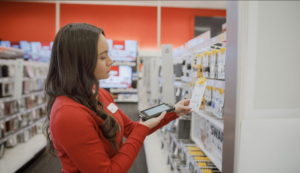
(Target)
Big Data Improves Customer Experience Through Personalization and Speed
Big data improves customer experience and loyalty by enabling personalized recommendations, loyalty programs, real-time offers and responsive customer service.
Amazon leads in personalized customer experiences. It analyzes transactions, browsing behavior and social interactions to adjust prices in real time based on demand and competition. Hesitant buyers automatically receive timely discounts, or recommendations of cheaper alternatives.
Its loyalty program, “Amazon Prime”, offers free shipping, streaming and exclusive discounts such as bi-annual “Prime Days”.
To ease delivery concerns, Amazon updates customers on delays. To drive repeat business, it alerts them when saved items restock.
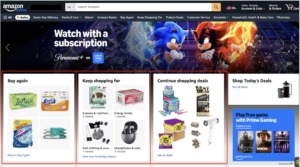
(Amazon)
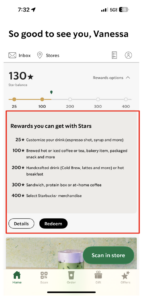
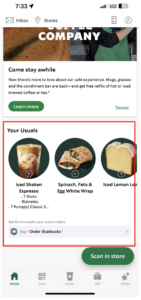
Starbucks’ popular rewards program and app drives loyalty by tracking orders, visits and location to personalize offers based on status.
Customers earn “stars” with each purchase, redeemable for free bakery items, drink customizations or merchandise.
The brand analyzes customer feedback from surveys and social media to resolve issues and boost satisfaction. Social responsibility campaigns are driven by initiatives their patrons resonate strongly with.
As a result, Starbucks fosters fierce loyalty through deep customer and community connections.
(Starbucks)
Brands collect customer data through user input (cookies, emails, phone numbers) or third-party suppliers. Those with limited infrastructure can benefit from solution providers.
For example, Klaviyo helps ecommerce brands like Brooklinen leverage website activity, purchase history and email interactions. In its first year, Brooklinen grew revenue 50%, with Klaviyo’s campaigns driving over 20% of sales through personalized recommendations and targeted promotions.
Though, balancing personalization and privacy requires collecting data while protecting it. Customers demand transparency, so retailers should share relatable stories and testimonials, while using feedback to build trust.
Big Data Makes Cross-Channel Shopping Easier for Customers
Cross-channel data integration unifies customer interactions across online, in-store, mobile and social channels. This 360-degree view helps retailers track journeys and gain omnichannel insights.
Adore Beauty used big data to launch its first Melbourne store in 2025. Leveraging online customer profiles, they curated in-store product selections and accurately personalized the shopping experience for new customers. Digital displays and networked screens provided real-time product insights, blending online and in-store experiences.
Also in 2025, Marks & Spencer launched “Wine Finder,” an AI tool that personalizes wine recommendations online, extending its in-store experience. By asking a few questions, it simplifies selection and encourages customer exploration of new products.
Tools like Zippin enable checkout-free shopping with AI, computer vision and big data. With their app, Whole Foods customers shop as usual, while in-store cameras and sensors track selections. Upon exit, payments are automatically charged, skipping checkout lines.
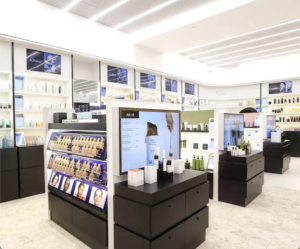
(Adore Beauty)
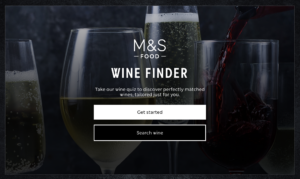
(Marks and Spencer)
Big Data Cuts Retail Costs with Sustainability, Inventory and Staffing Improvements
Retailers boost sustainability by reducing waste, cutting energy use and improving supply chains. Weather forecasting tools help predict and prevent delivery disruptions from extreme weather and resource shortages.
IoT sensors in stores and warehouses track weather and foot traffic, automatically adjusting lighting and HVAC for energy efficiency.
Blockchain-powered systems track product journeys to ensure compliance with fair labor practices and sustainable sourcing. VeChain helps LVMH to verify the authenticity of high-end goods and guarantee ethical practices. Walmart partners with IBM Food Trust to monitor food products from farm to shelf for potential contamination.
Demand forecasting ensures optimal stock levels based on customer preferences. Retailers cut waste and reduce inventory costs by preventing overstocking and unnecessary markdowns.
Blue Yonder uses AI to forecast demand, cut excess inventory and automate restocking. Lidl’s integration reduced inventory costs by 15%, improved product availability by 30% and streamlined operations.
Zara uses data-driven demand forecasting to guide small-batch production. Retailers predict demand by region–if an item sells well, more is produced, if not, production halts. This approach reduced unsold inventory by 50% compared to traditional retailers.
Retail big data also optimizes staffing by analyzing traffic patterns, ensuring coverage during peak times and reducing overstaffing during slow periods.
Walmart acquires data from in-store sensors, sales transactions and mobile app usage to align employee schedules with peak hours, cutting costs and enhancing customer support.
Thus, big data cuts many costs across departments, though integration poses challenges. Compatibility issues with legacy systems require costly updates. Employees need training for new platforms. The benefits can outweigh the costs, but overcoming challenges requires finding the right tool for your business needs.
To best measure ROI of big data initiatives in retail, short-term benefits include increased sales, higher customer feedback and strong conversion rates from personalized recommendations and targeted marketing.
Long-term advantages like operational efficiency, loyalty programs and brand sustainability take longer to develop, but build the foundation for lasting growth.

(IBM)
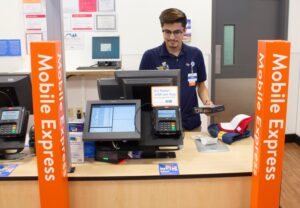
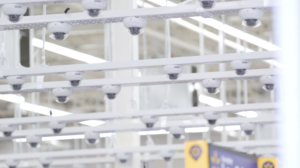
(Walmart)
By attending CommerceNext events, retailers and brands can gain access to exclusive sessions and workshops related to big data trends and current applications. The 2025 CommerceNext Growth Show returns to NYC this June 24-26th! With 2,700+ attendees, 150+ speakers and 75+ sessions, our annual conference facilitates partner relationships and community building for retailers and vendors.
If you’re a retailer and interested in attending, you can register for the conference here.
If you’re a solution provider and want to get involved with our retail community, explore our sponsorship opportunities. Book an intro call with CommerceNext––we’d love to meet you!
Related Posts
-
Fueling Ecommerce Marketing Growth With A Customer Data Platform
It’s the technology that’s on every direct-to-consumer (DTC) and retail…
-
5 Omnichannel Retailing Examples that Drive Results
CommerceNext brings insider insights from retail and ecommerce experts on…
-
How AI-Driven Hyper-Personalization & Smarter Engagement Drives Revenue
In our latest CommerceNext webinar, retail leaders from KEEN Footwear,…




